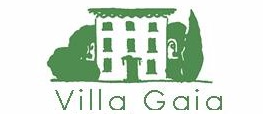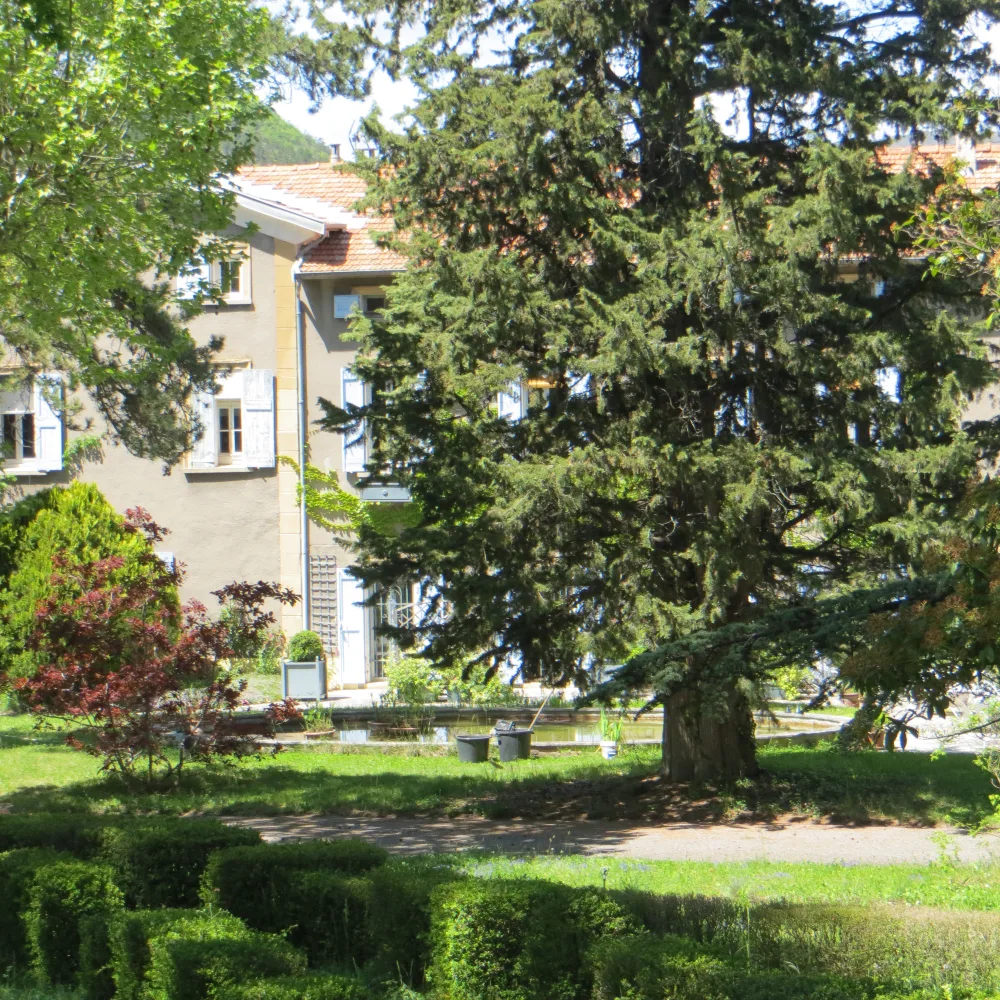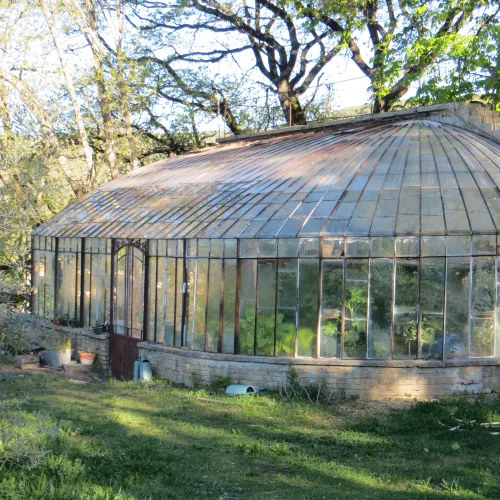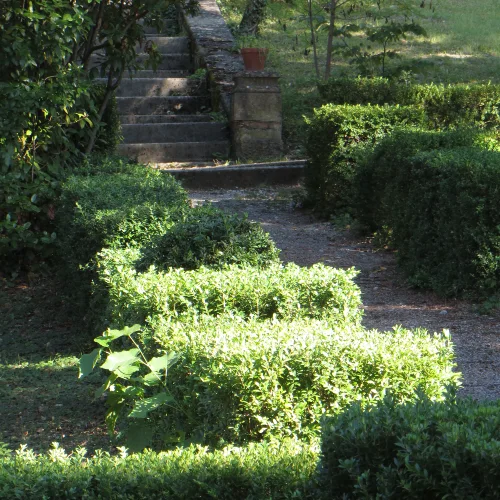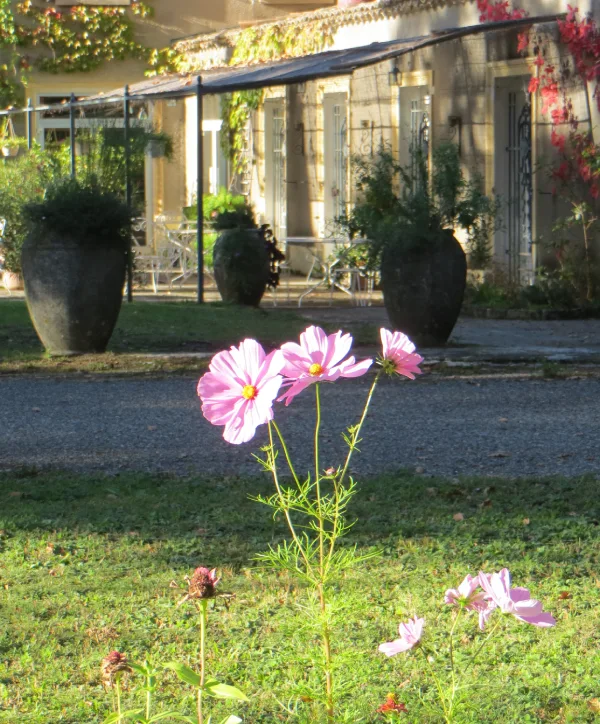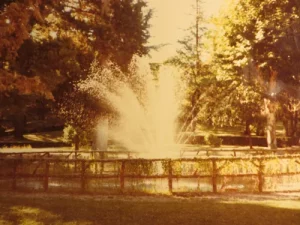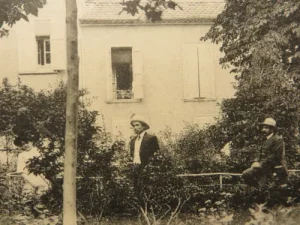An exceptional garden
At the heart of our estate lies an ancient garden, full of character and history, exuding an irresistible charm and a touch of mystery. It is a vast and inspiring space that has captivated the imagination of many artists over the years.
The garden of Villa Gaia.
Charming hotel and gardens
This garden comprises a wooded park, a thriving vegetable garden, a fountain whispering ancient tales, a reflecting pool where reflections dance, an olive grove, traces of an old vineyard, and even an old greenhouse awaiting restoration. All these elements tell their own story and add to the richness of this place.
Our project to create a garden-school for the preservation of heritage and biodiversity is taking root here. We aim to breathe new life into this garden while preserving its history and encouraging nature to reclaim its place
The Victorian greenhouse
restoration

The greenhouse restauration project has been entrusted to Mister Pâris Dariel with the financial help of Europe and Region SUD Provence Alpes Côte d’Azur, the recommandation of Fondation du Patrimoine and leaded by the GAL Dignois.
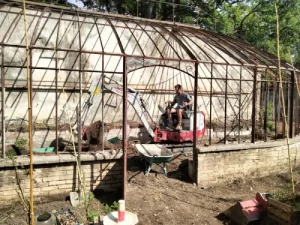
Mini-pelle dans la serre – Villa Gaia Hotel à Digne

A gardening school source of inspiration.
With this new project of the old vineyard will come back to life, the old greenhouse will regain a new youth, and the vegetable gardens will become a dynamic learning space for the younger generations. It’s a project that aims to blend the past and the future while advocating for sustainable nature.
This garden is not only a place of inspiration but also a refuge for local wildlife. Many birds have made it their home, and a variety of animals find shelter there, creating a rich and diverse ecosystem.
Thousands of flowers
This garden has a youthful and dynamic spirit. It’s where history meets innovation, and where heritage blends with nature. It’s a place for curious minds, young artists, and biodiversity enthusiasts. It evolves to meet the needs of today while preserving the treasures of the past, making it a particularly special place in our estate.
Learn more about the history of the garden
The site is at the site of the old toll that controlled the Gaubert road in the Middle Ages and extends over about 3 hectares of land.
The building, first restored in 1730, is surrounded by gardens and farmland. The estate has belonged to many owners over the past centuries. Among them, the Marquis du Pillot, general guard of the forests who participated with Prosper Demontzey in the reforestation of 1868 and to whom we owe the planting of many trees in the park.
The arboretum
The arboretum set up by the Marquis includes many subjects, some of which are now large: Cedars of Lebanon and the Atlas, Sequoia, Sycamore Maple, plane trees, lime trees with large and small leaves, Gordon cypress, Italian cypress, Maritime Pine, Cedar, Flowering Ash, Pedunculate Oaks, Strawberry, etc.
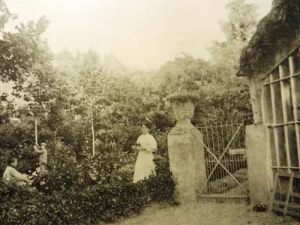
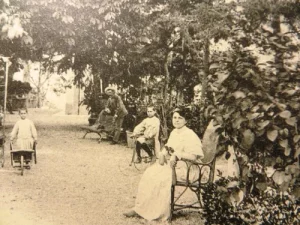

The former owners
Many owners have succeeded each other in recent decades. At the age of 24, Lucien Burle left France for Mexico where he made his fortune. He returned to the country in 1891 and acquired the property in 1905 to make it his summer residence in the countryside. He settled there with his wife and two sons Miguel and Marcel. Lucien and Jeanne Burle often received their friend, Maurel. It is to them that we owe plans and the development of the park as it is now with its alleys, the tuff fountain, its pond and its gloriettes and the construction of a back greenhouse that is of particular interest.
The greenhouse is located at the bottom of the property at the corner of the Gaubert road and the old imperial road, probably where the old toll was located. It is a «greenhouse backed» to a thick wall 5 meters high and 15 long approximately. This coated stone wall, exposed to the sun, stores heat during the day. The metal structure was made by a company in Marseille as evidenced by the medallion on the door. The cover is in small glass of 20cmx40cm arranged like tiles and retained by zinc fasteners. Openings allow ventilation and control of the interior temperature. Masonry culture tanks run all around. It is equipped with an irrigation system consisting of pipes fed by the retention ponds located upstream in the property. A circulation with a wrought iron ramp is located at the top of the wall. It allows the replacement of windows or the peeling of mulches to shade in summer.
This greenhouse essentially allowed the preparation of seedlings in spring to plant the vast vegetable garden.
The local culture
Le Potager is located higher up in front of the house. A gardener, Monsieur Giraud, was still alive. the vegetable garden seemed to be structured with alleys, canals and an irrigation system always fed by retention ponds located upstream. There are traces of a watercress and a basin.
An orchard mainly planted with apple, fig and plum trees was in the extension of the vegetable garden. Traces remain. Above is an olive grove and the remains of a vineyard lined with almond trees.
In front of the house extends the pleasure park planted in terraces, its driveway lined with lime and boxwood, a wide staircase that extends by a path that led to a pine forest before the tracing of the new road of Nice.
If the Flora is rich, the Fauna is no less. The entire estate was classified as an LPO refuge in 2018. It is home to a large number of birds. Entomologists come to observe a wide variety of butterflies and other insects. The pond in front of the building hosts a wide variety of aquatic plants (horsetail, papyrus, lotus, water lily and water iris) it is populated by goldfish, hosts frogs and attracts beautiful specimens of dragonflies. In the vegetable garden resident toads and hedgehogs.
Historically this property is the illustration of a lifestyle in the countryside of the bourgeoisie of the 19th century. Agriculture and leisure go hand in hand. Naturally, this area at the entrance to the city of Digne-les-Bains is a reservoir of plant and animal species.
Trees and plants
%
